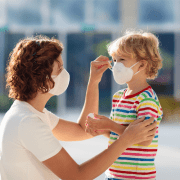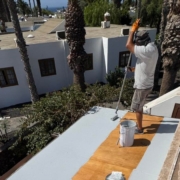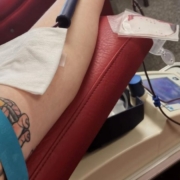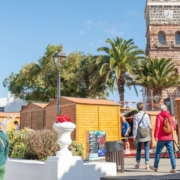Austria recently made the wearing of face-masks compulsory for all citizens leaving their homes, but many other countries, including Spain, have still not issued any rules governing mask usage. So what is the truth about masks?
Face masks had been closely associated with the Far East long before the current coronavirus outbreak. In countries such as China, Korea and Japan they are seen as a matter of courtesy – if you’re ill, you are expected to wear one, and in large urban centres, they also protect people from high levels of air pollution.
In the west, however, we still often tend to be suspicious of masks and the World Health Organisation has stated that there is no evidence that they can prevent most people from catching coronavirus. It recommends masks for those dealing closely with patients, and also recommends that virus sufferers should wear them, as they have been shown to reduce transmission rates.
However, this advice means that people who are not yet exhibiting symptoms, but who may still be highly infectious, will feel no need to wear a mask – something that is unlikely to occur in the Far East during a pandemic.
The issue of asymptomatic COVID-19 sufferers has prompted the European Centre for Disease Control to recommend mask use as a complementary measure, and Spain has adopted this recommendation. As a result, we’re likely to see more and more masks around us for the near and medium future.
Western advice on masks has also been influenced by the fact that there simply aren’t enough for everyone right now. For example, tens of thousands of masks sent to the Canaries in the last months have been sent exclusively to health professionals and associations. Individual demand is very much a lower priority.
In the Far East, experts are convinced that widespread mask use – many even wear them in the home – has helped to contain the spread of coronavirus. The word “courtesy” used earlier is also important – mask use is seen as a visible commitment to helping society, and is a form of etiquette that raises consciousness of infection and also helps to cut down on face touching.
WHICH MASKS WORK?
FFP2 and FFP3 masks are muzzle-shaped protective equipment that provide a high-level of protection and are used by medical staff who are in close contact with virus victims. They are worn tightly, and photos of health workers with marks from their red masks after long shifts have been widely shared. It’s unlikely that you’ll have a supply of these masks, but if you do they’ll probably do a lot more good at your local hospital than on your face.
For most of us, the most common facial protection will be flat cotton multi-layer surgical masks or light paper dust masks or respirators. Neither of these offer a particularly high level of protection, but it should again be stressed that protection is not the main aim of mask-wearing.
Whether you wear a mask or not is up to you, but if you do it’s a good idea to take time to get used to it. Masks can be uncomfortable, especially in a hot climate such as Lanzarote’s, and ill-fitting masks that you’re always adjusting are next to useless and may even increase the risk of infection.
TIPS:
To avoid fogging up your spectacles while wearing a surgical mask, the Tokyo Police recommend folding the top quarter of the mask back or placing a tissue between mask and nose.
Don’t wear your mask until you need it. It’s not needed at home or if you’re alone in your car. But once you put it on, try not to touch or adjust it, and don’t remove it until you can wash your hands before doing so.
Search for advice on making your own, reusable masks from cotton and paper towels.










